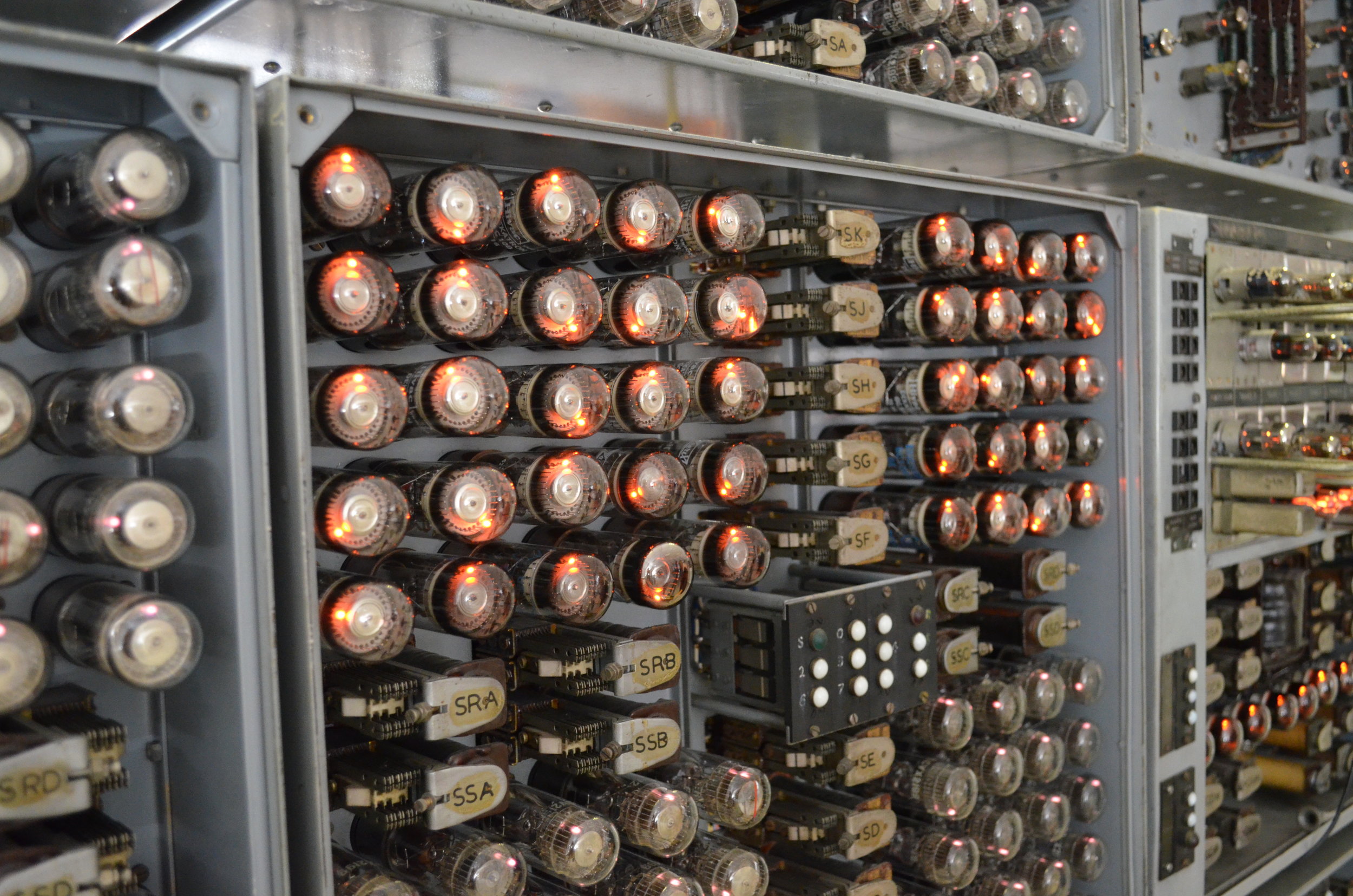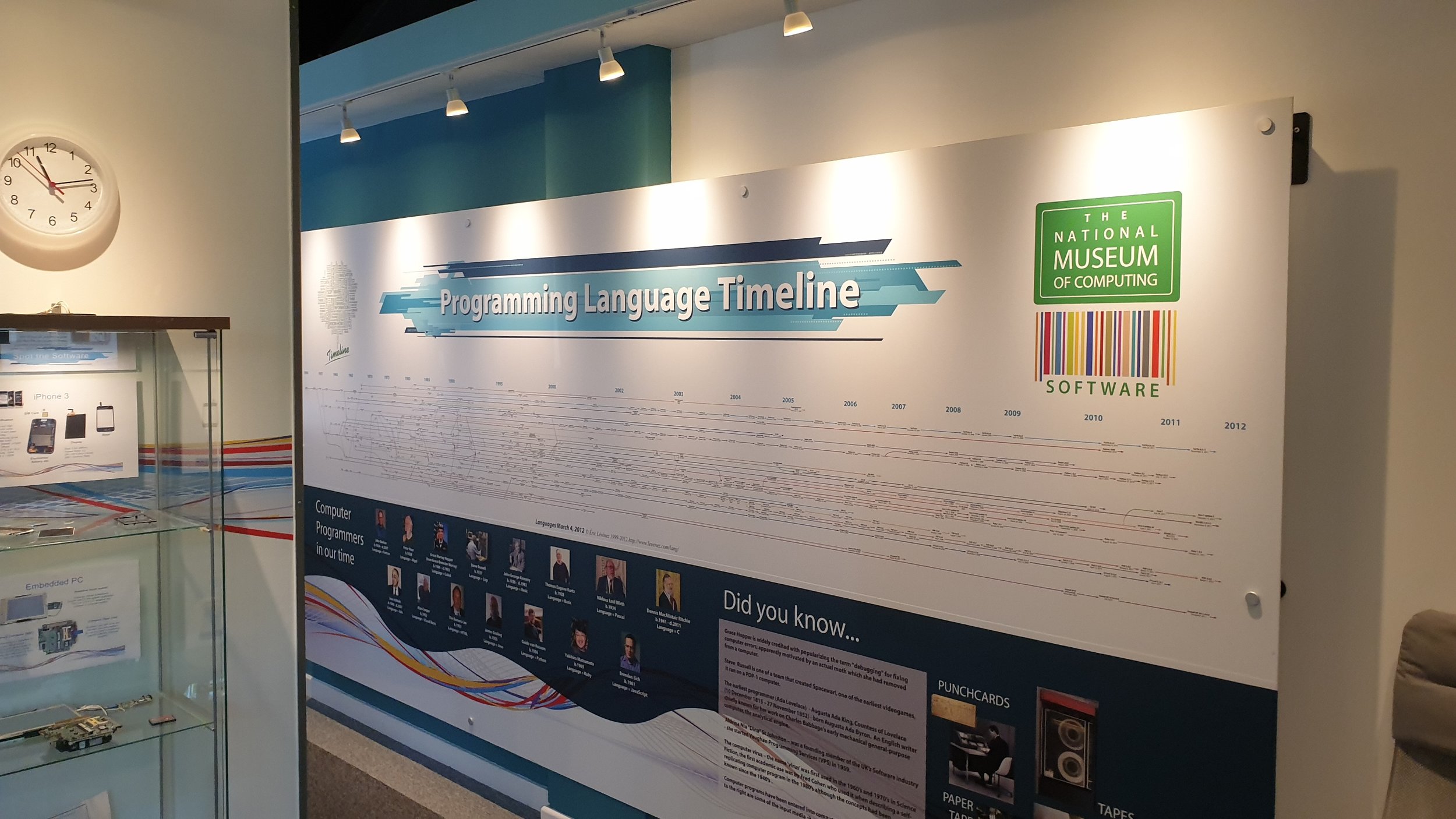Below you can get a glimpse of some of the galleries and rooms around the museum and what artefacts and equipment we have in them.
A 3D map of the museum is available to download so you can see where things are before you visit:
3D map of the Museum
Breaking Enigma
A working reconstruction of one of the most famous wartime machines is now on display daily at The National Museum of Computing. With Colossus, the Bombe is widely regarded as having shortened the war, saved countless lives and was one of the early milestones on the road to our digital world.
From encrypt to decrypt during World War II
The Tunny Gallery, along with the Colossus Gallery, shows the entire World War II code-breaking process of the Lorenz-encrypted messages (Tunny as we called it) from signal intercept at the Knockholt receiving station in Kent to the production of the final decrypts on Tunny machines in Bletchley Park.
World-famous rebuild of the first electronic computer, and a random number generator
Colossus, the world's first electronic computer, had a single purpose: to help decipher the Lorenz-encrypted (Tunny) messages between Hitler and his generals during World War II. The Colossus Gallery housing the rebuild of Colossus tells that remarkable story.
ERNIE is a well known name in the Premium Bond World but did you know that some of the team that built Colossus also built the first ERNIE. The Colossus gallery has a reconstruction of the original demonstrator built to prove how random numbers can be made from ‘Noise’
When computers were people
For centuries before computers were invented, calculations could be performed on some ingenious and beautifully designed devices. An Abacus, slide rules, calculators of all shapes and sizes are on display and may even be remembered by some visitors.
How the early computers were constructed and looked
See what the very early computer systems looked like in the 1950s; The reconstruction of the first EDSAC computer, the Harwell Dekatron Computer, aka WITCH, and the original HEC prototype.
When computers filled a room
Since the advent of the PC, the imminent demise of "big iron" has been predicted, but they are still here - alive and well in the cloud. The Museum's largest computer, the huge ICL 2966 of the 1980s is running most weekends, and there are a 1950's Marconi TAC, 1960's Elliotts and a 1960s IBM 1130.
How software has become embedded
Programmable machines have existed for at least 200 years, but computer languages did not develop until the emergence of the electronic computer in the 1950s. Today software controls many household and other gadgets. How many do you think are in your home?
See how computer games changed the personal computer
The PC Gallery with computers from the late 70s to the present is a real favourite with nearly all visitors. You can roll back the years and play retro games on the many working computers. Nostalgic for some, it's a revelation for younger visitors. BBCs, Macs, Spectrums, Amstrads ...
Simulating real and virtual worlds
From early analogue computers simulating springs, Cray super computers simulating the weather and structures, games consoles simulating virtual worlds, right up to today’s modern computers, simulation has always been an area that has benefited from technology. See some of those iconic systems and even play on some of the early games consoles. You could even play Space Invaders again!
The Beeb and its legacy
The landmark BBC Computer Literacy Project of the 1980s made a huge impact on education in Britain. The TNMOC classroom explains the origins of the BBC initiative and the development of Acorn - plus a working 1986 BBC Domesday system.
How the internet was made possible
Used by over 25% of the world’s population, the internet is the phenomenon of our age. The NPL Technology of the Internet Gallery traces communication technologies from the telegraph to the internet and explains Packet Switching, the key technology of modern communications.
Closed Galleries
These galleries have now been closed and remain here for reference. Replacement galleries are currently being planned so please look out for any announcements related to these.
Behind the scenes at the airport
Did you know about the people and computers who ensure that you have safe take-off and landing for every flight you make? Visit the NATS Air Traffic Control Gallery and experience what it's like to be an air traffic controller in our virtual airport.














